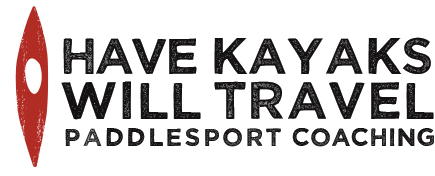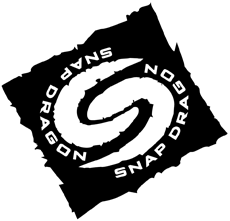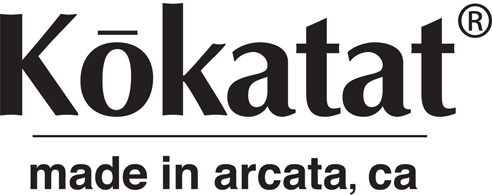During Thursday’s FSRT, Alec waits to catch a throw line and be towed into shore. On Thursday, we assisted as Scott Fairty of Geneva Kayak taught Foundation Safety and Rescue Training, a prerequisite course for the BCU coaching track.This is a fabulous course for anyone who intends to paddle a kayak or canoe on anything other than small, flat bodies of water. It covers all manner of rescues for all kinds of people and crafts as well as towing techniques. But beyond the mechanics of getting people back into dry boats, it covers incident prevention and management. If a license were required for paddling, this could be one of the key required courses to prepare you to earn...
A neighborly full-moon paddle
For years, our neighbors have patiently put up with our yard full of kayaks and drying gear. The way our yard typically looks. Actually, they’ve more than put up with it. They’ve stopped by and asked us questions as we’ve loaded and unloaded our boats, and many expressed a desire to go out on the lake some day. The rig, ready to roll. Last night, we took 10 of our neighbors on a full-moon paddle. The conditions could not have been better. The air was in the lower 70s and the water in the upper 60s. The wind was calm and the sky was clear. Half way through our paddle, the moon rose above the horizon. It was magical. We were joined by fellow instructor Wendy (Bloyd-Peshkin) Madgwick, one of our partners in paddling crime.Here are some photos from before and during that paddle: Matt and Annie, read to go. Joan and Gretchen, not nervous at all! Sharon helping Stephen get in his boat and on the water. Darcy, at ease in her boat. As we landed, we were greeted by Lyn (Bloyd-Peshkin) Stone, who couldn’t resist the opportunity to see the moon over the lake even though she wasn’t available to join us for the paddle. Then we loaded our boats and returned to Geneva Kayak Center Lakefront to eat some sweets and savor the beauty of paddling on Lake Michigan at night under a full moon. The moon after we got off the water, demonstrating the need for a tripod. Thanks to our neighbors for sharing this evening with us, and a special thanks to Scott Fairty of Geneva Kayak for staying at work so late to make this...
But it sounds like "paddling"…
Bicycling and kayaking have a lot in common. They allow you to cover distance at a human-scale pace, enabling you to actually see and even engage with what you encounter on your journey from here to there. Many serious sea kayakers we know are former (or current) bicyclists. Both sports require a similar delight in repetitive motion and resilience to boredom. Hannah en route to the Prairie Path. A few days ago, we pedaled our bikes on the Illinois Prairie Path, a local rails-to-trails path. As you bike along this 61-mile path, you pass through small downtown business districts, past parks and gardens, over bridges and along rivers. You see kids on trikes and riders far more serious than you are on bikes. You pedal past walkers and joggers of all ages. It’s a magnet for people who need a quick dose of nature and some exercise.Along with Sharon’s siblings, we’ve planted two trees along this path in honor of their parents on their 75th birthdays. Those are some of the best gifts we’ve ever given, and we suspect among the best gifts they’ve...
Robert the rainmaker?
Here comes the storm! Our last day at Adventure Crafters 2009. The day before we left Maryland, we decided to go for one last paddle with Robert. It had been a hot day, and building cumulus congestus clouds suggested a short window of opportunity. So we chose a nearby put-in with a really short carry and hurried to the water.No sooner had we unloaded the boats, geared up and gotten on the water than we heard a loud thunderclap. Looking back, we saw towering cumulonimbus clouds moving in, and then lightning.We immediately got off the water.We seem to have a pattern of paddling as thunderstorms move in, particularly when we’re paddling with Robert.Hmmmm….. Storm moving in. Adventure Crafters...
The "psychological tow"
The day before we were scheduled to teach a leadership and rescues class at Adventure Crafters, during which we planned to teach towing techniques, we went for a social paddle with co-owner and instructor-in-chief Robert Schrack. We were talking about classes we’ve taught and tours we’ve led when Robert introduced us to a term we didn’t realize we had been lacking: the “psychological tow.”If you’re an instructor or guide, or simply a skilled paddler who has taken less experienced people out on the water, you’ll immediately know what this means. Frequently, somebody becomes overwhelmed by conditions. They may be freaked out by waves or wind, or simply tired out by too much exertion, and they need some help to complete the planned journey.You could tow them, which would be more work for you and might be humiliating for them. But in the case of bumpy water, that might make things worse. So instead, you coach them. “Keep going,” you say. “Keep your hips loose. That’s great. Keep paddling. Nice work. It’ll be easier if you get your entire blade in the water.”You instruct them a bit, encourage them a lot, and distract them. “You know, the bar lakes along this shoreline were once small bays….” You blather on, paddling close to them and sounding relaxed, offering a mix of small talk and advice, and they manage to make it on their own.That’s the psychological tow. Having a term for it is not only satisfying, in the same way as knowing the names of birds or mushrooms. It’s practical. By placing the psychological tow in the category of tows, it reminds us to try this first before a more invasive intervention.Thanks,...
Leadership and Rescues class
Practicing T-rescues in the Chester River. On Sunday, we taught a class called Leadership and Rescues. This five-hour workshop was designed to cover the essential assisted and self rescues, including variations appropriate for specific conditions, as well as basic towing techniques. But we also wanted to help students explore each paddler’s role in avoiding an incident, and how we can prevent things from spinning out of control.Most of the time, we try to get our classes on the water as quickly as possible. After all, students sign up for a kayaking class because they want to paddle, not because they want to stand on the shore listening to us talk about paddling. But in this case, we deliberately spent the first 45 minutes on land, going over some of the basic leadership concepts we’ve learned and the safety and communication issues of which anyone paddling in a group should be aware.We promised our students that we’d post a synopsis of what we covered during that class—a virtual handout—so this blog entry will do double duty, sharing that material with them as well as with anyone else who’s interested in it.We bagan with two BCU acronyms we find especially helpful: CLAP and SAFE.CLAP stands for Communication, Line of sight, Avoidance is better than a cure, and Position of maximum effectiveness. These are considerations group leaders must address before and during and after any paddle. Communication is a huge category that includes everything from whether or not the plan and expectations are clear and agreed upon, to how the group will communicate on the water. Line of sight refers to the need to the leader to keep all members of the group in view at all times. Avoidance is better than a cure is a British way of saying that an ounce of prevention is worth a pound of cure. And Position of maximum effectiveness refers to the need for the leader to be where he or she can best control and direct the group.SAFE stands for Stop, Assess, Formulate, Execute. This helps avoid rash reactions to situations by reminding us to size up the situation and think through our options before acting.(We have to thank Jeff Allen for introducing these concepts to us. For more in-depth explanations, see the BCU coaching handbook.)After that, we talked about other essential pre-trip checklist items:– Appropriate “kit” for the conditions, which should include food and water, first-aid for yourself and your boat, spare clothing, and communication, safety and signaling equipment.– A medical talk (and how to help others feel comfortable talking about issues that you ought to know about).– Filing a float plan (and with whom).On the water, we practiced the basic T-rescue and...
Pitch-perfect pitchpole
Setting out into the surf. It didn’t look very challenging. Surf landings are exciting and unpredictable. Yesterday, we practiced launching and landing with our friend Robert Schrack in a tricky shore break near Cape Henlopen State Park in Delaware. It wasn’t a particularly rough day; in fact, once we punched through the dumping surf, the swell couldn’t have been more than a few feet. Well outside the shore break, the swell was gentle. This is an unfamiliar phenomenon for Great Lakes paddlers like us. When we have waves, they’re wind-driven and come in rapid succession. What you find at the shore is present further out. The breaking waves give way to swell as the water gets deeper, but we simply don’t get massive shore break when there’s nothing exciting going on a few yards out, and we aren’t accustomed to waves that arrive six to ten seconds apart.Back to yesterday. Launching was the familiar splashy affair, the only difference being salt water instead of fresh water in our faces. But landing was a challenge. The waves were in sets but hardly predictable. The first couple of times went pretty well. We paddled in behind wave crests, back paddled to let them pass us, then chased them again. The last few yards are always dicey, but we mostly landed without broaching, popped our skirts and ran for it.Then came the final landing before lunch. I (Sharon) watched the sets, timed it as well as I could and headed in. I chased a wave, back paddled while the next crest passed, chased another and so on.Finally, I caught what I thought was going to be the wave that would propel me all the way in. But I was wrong. As I neared the shore, another wave arrived just behind the one I had put my trust in. I felt my stern rise and rise until I was vertical and several feet in the air. A perfect pitchpole.Problem was, the water was shallow and landing on my head (or back, assuming a successful tuck), would be painful or worse. Instinctively, I twisted sideways as I fell and landed in what must have been a few inches of water. I immediately knew I was fine. What I remember. As I stood onshore, a surfer who had watched my landing came over to congratulate me. “Wow, I’ve surfed all over and I’ve never seen anything like that,” he exclaimed, giving me a high-five. “That was impressive! You must have been up 12 feet!”It was an amazing experience. I was surprised by the amount of time I had between my realization that I was vertical and my return to horizontality. It was enough time to...
Those aren’t white sand beaches
A couple of weeks ago, we spent some time camping at Newport State Park on the Door County Peninsula. Our hike-in site was also a paddle-in site, so we were able to take a variety of day paddles from our campsite.One day, we did the 25-mile round-trip to Washington Island, with stops at the Northport ferry landing and the former Coast Guard station on Plum Island. As we rounded the tip of Door County, we saw piles of what appeared to be white sand along the shore. Upon closer inspection, we realized they were mounds of zebra mussel shells. This Great Lakes invader has made the water clearer, but with an unfortunate side effect: More sunlight now penetrates deeper into the lake, encouraging the growth of cladophora algae, which washes into shallow areas and smells disgusting. Cladophora algae on a Door County beach. It was a sad aspect of an otherwise delightul discovery: Despite its popularity as a tourist destination, Door County still boasts some beautiful, sparsely visited natural areas. You can catch the sunrise from one side of the peninsula and the sunset from the other. You can paddle all day and see very few boats. You can pop into town for a latte, or retreat to your campsite and feel like you’re far away from civilization. Cooking breakfast at our campsite. Dining alfresco. Two forks...
Bear with us….literally
We just left the Adirondacks in upstate New York, where we camped on a small island in Lower Saranac Lake and spent the days paddling and hiking. At night, we hung our food from trees–standard practice for avoiding messy visits from bears, racoons and other local residents.During one visit to a paddling outfitter in the town of Saranac Lake, we learned about the bear-proof containers that are popular among backcountry campers in this area. Then we read this in today’s New York Times.Too bad Yellow-Yellow wasn’t around when we couldn’t pry open one of our front hatch covers…. Washing dishes on Hocum Island, where we were...
Reentering the blogosphere
Our failure to post anything for the past few months doesn’t reflect inactivity. Quite to the contrary, we’ve been teaching and training on the water, and reflecting and planning off the water. We just haven’t been writing about it.The season has just begun, and in addition to our personal paddling and a few local classes we’ve taught, we’ve been involved in: The West Michigan Coastal Kayakers Symposium, including a coach training with Jeff Allen, co-owner of Sea Kayak Cornwall. If you want to read about it, check out Keith Wikle’s wonderful blog, Go Kayak Now. BCU Coach 1 training and assessment. Four days of intensive training and scrutiny with BCUNA administrator Bill Lozano (owner of Atlantic Kayak Tours), midwest RCO Kelly Blades, and Geneva Kayak‘s own Scott Fairty. Yeah, we passed. (wOOt!) The Windy City Kayak Symposium, now in its third year, which featured Peter Jones from North Wales, Ben Lowry, Steve and Cindy Scherer, and a host of talented local coaches. The inaugural Burnham to Marquette Sea Kayak Expedition, sponsored by the Northwest Indiana Paddling Association. Tom Bamonte provided a nice write-up on the CASKA blog. The biannual Inland Sea Kayak Symposium, based in Washburn, Wisconsin near the Apostle Islands. This year’s featured guest was Nigel Dennis. We hope to reflect on some of those events in upcoming posts, but at the moment we’re feeling like lazy letter-writers who have delayed corresponding to the point of embarrassment. So instead, we’ll reenter the blogophere in the present tense in the coming days and weeks. Thanks for your...







